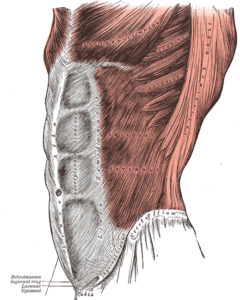Table of Contents
The McGill Curl Up and The Big 3
The McGill Curl up is one of Dr. Stuart McGill’s Big 3 core exercises. The McGill Big 3 are the 3 foundational movements that Dr. McGill uses to strengthen the core and ultimately eliminate lower back pain and disorders so that you can return safely to exercise or simply get back to your normal activities of daily living. If you are currently dealing with lower back pain and seeking treatment, my suggestion is finding a professional who is familiar with Dr. McGill’s works. If you find a practitioner who is not, I would strongly recommend seeking help elsewhere. Dr. McGill is the O.G., if you will, of lower back pain and disorders. If you are interested in getting familiar with Dr. Mcgill’s methodologies and perspectives, I highly recommend this podcast episode done by Dr. Sebastian Gonzales.
The Big 3
The big 3 is a series of exercises to be used to build a strong and resilient core. The purpose of a strong and resilient core is more than just looking great on the beach. In reality, the reason for a strong core is to have true protection and function of the spine. The core is not simply the 6-pack abs that most think of. The core is a multitude of different muscles that completely surround the spine. They surround the top, the bottom, the front, the back and the sides. All of these surrounding muscles must be balance and work in unison for the spine to function properly and remain protected from injury. The core exercises that can build this type of core we are looking for are the bird-dog, the McGill curl-up, and the side-plank.

Superficial muscles of the core
The Mcgill Curl-Up
When most people think of a curl-up, they would probably think of the abdominal crunch or the sit-up. These exercises are NOT what we are looking for when we think about spinal stability and resiliency. Instead the Mcgill curl up is an exercise that involves very little spinal motion with a significant amount of core activation. This allows for decreased risk of injury because the spine is not being forced into a flexed, loaded, and compressed position repeatedly. This type of spinal movement is especially detrimental for people who are dealing with an flexion intolerant injury, meaning that the position of a flexed spine actually aggravates the injury and causes increased pain. If that isn’t enough, the traditional curl-up typically relies on the hip flexors to help pull the torso towards the knees. So, instead of fully training the abdominals, you are actually doing a great job at training the hip flexors.
The McGill Curl-Up instead relies on zero movement in the lumbar spine.
Steps to proper execution of the McGill Curl-Up
- Lie on your back with one knee bent and the opposite leg straight on the floor. Place your hands underneath your lower back, this allows you to feel and make sure that the lumbar spine is not moving.
- Tuck your chin to maintain a neutral cervical spine (neck). Now, lift your head and shoulder ever so slightly off the floor while maintaining that chin tucked position.
- Hold this position for 10 seconds while bracing and engaging the core.
- Relax to the starting position.
How many? How long?
It is recommended to perform the mcgill curl up in a pyramid scheme. Starting with 5 reps of 8-10 second holds. Then 3 reps of 8-10 seconds holds. Then 1 rep of 8-10 second holds. Resting for 20-30 seconds between each set. As you begin to get stronger and this scheme becomes easy, increase the rep ranges. Example; increase to 7 reps, then 5, then 3, then 1.





I located your web site from Google and I
need to say it was a terrific locate. Thanks!
What a great post!